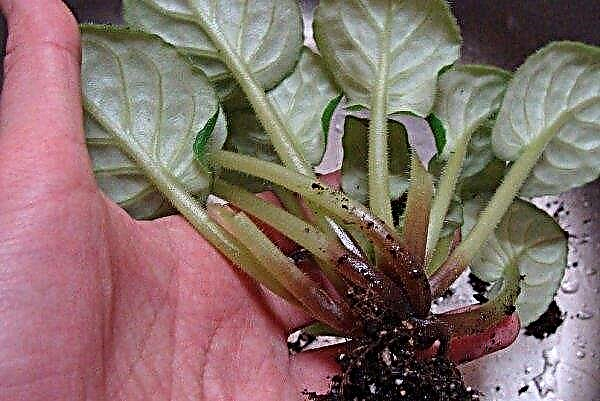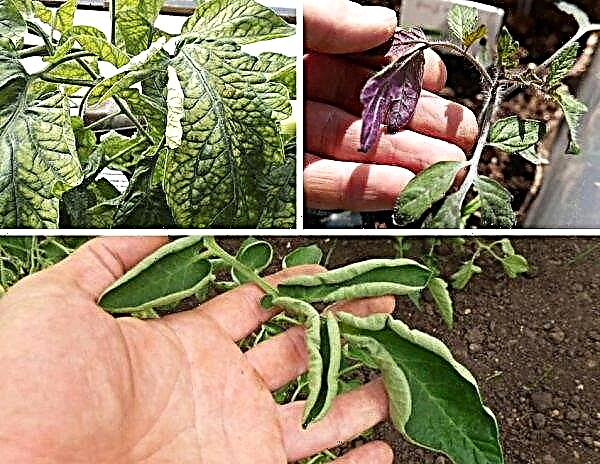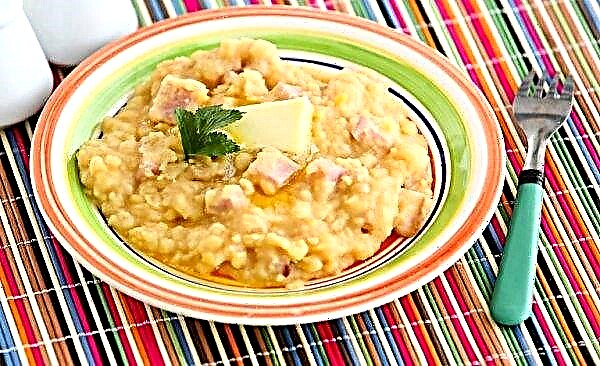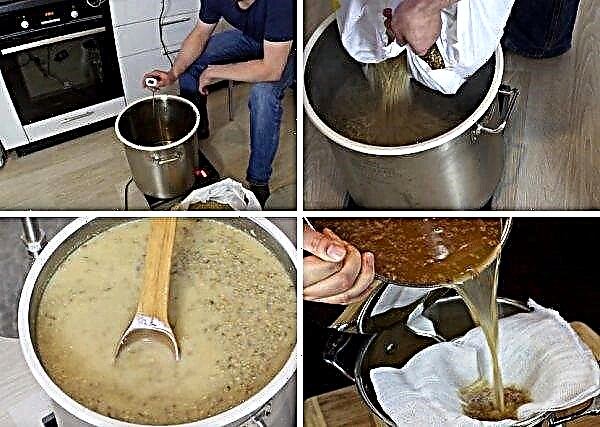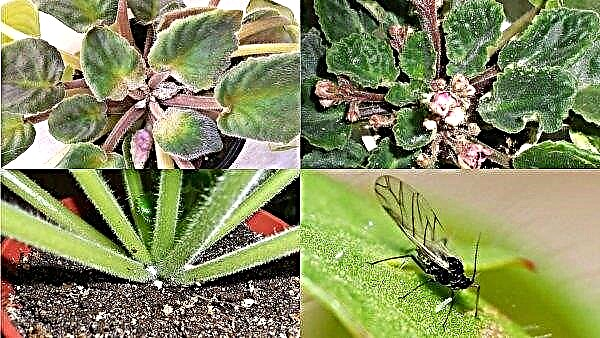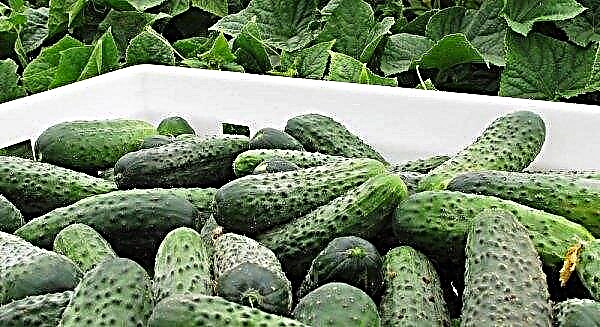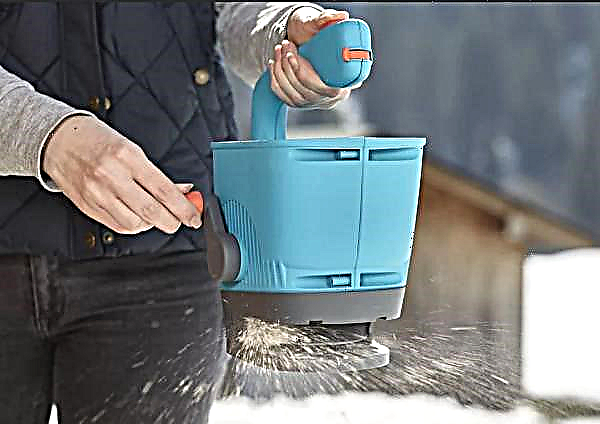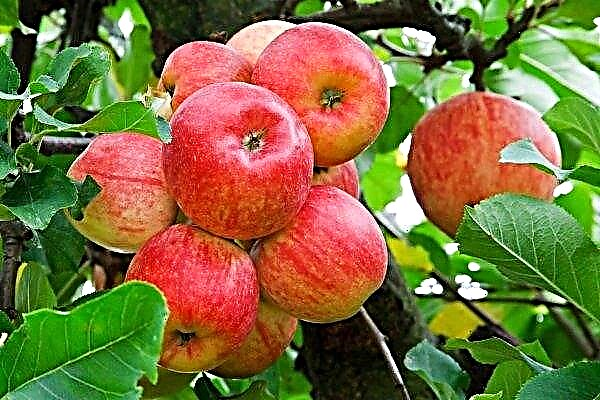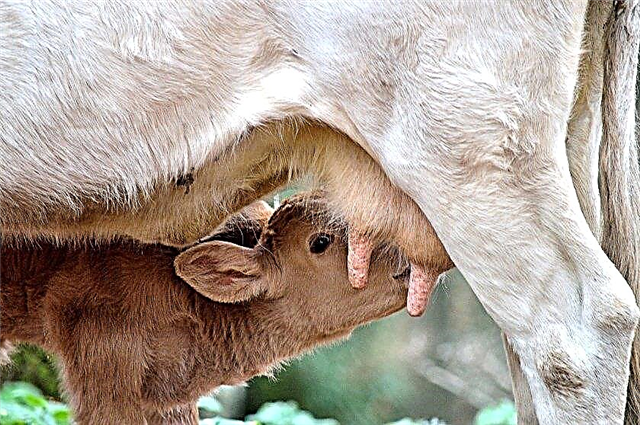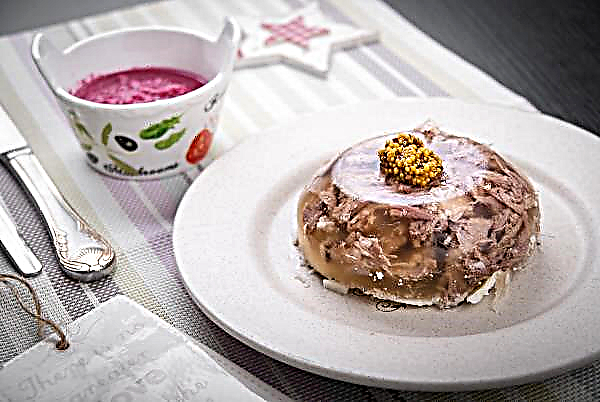One of the most popular ornaments in summer cottages is the evergreen thuja. It belongs to the Cypress family and has a fluffy crown formed by branches with dense scaly needles. Thuja is widely used in landscape design, and you can grow it on your site without much effort. Read more about the rules of planting a tree and recommendations for caring for it, as well as a description of the best varieties - further in the article.
Time for landing
It is recommended to plant thaw in open ground in the spring, in the second half of March. In this case, the seedling will have time to take root and gain strength before the onset of cold weather in order to safely survive the winter.
But if the climate in the growing region is mild, and winters are not too frosty, then the tree can be planted on the site in early October. For planting, it is better to choose morning or evening hoursso that the needles of a young seedling do not suffer from the bright sun.
Did you know? Residents of Canada make brooms from fresh shoots of thuja, which they place in living quarters. The needles of the tree exude a pleasant aroma and refresh the air.
Selection of varieties and seedlings
Depending on the external characteristics and cultivation characteristics, two types of arborvitae are distinguished - eastern and western.

Oriental thuja (or plane branch) consists of branched flat shoots that look like plates and form several trunks. This species can be grown only in regions with a warm climate, therefore it is cultivated in gardens in Japan, China and Korea.
The crown of the western thuja is formed by many lush shoots that begin to grow from one central trunk. This type of tree is grown in Canada, the United States and Europe, because it needs a cold wintering. Western thuja differs in endurance and unpretentiousness to environmental conditions, therefore it is more suitable for regions with moderately cold or frosty winters.
Each of the species is represented by many varieties.
The best of them:
- Danica. The tree is stunted (up to 60 cm in height)therefore it is convenient to use it to create compositions from other decorative plants and flowers. The crown diameter is 0.5–1 m. The positive qualities of the variety are its unpretentiousness to the nutritional composition of the soil, compact size and the absence of the need for frequent pruning. The disadvantage of Danica is its poor drought tolerance and sensitivity to waterlogging of the soil.
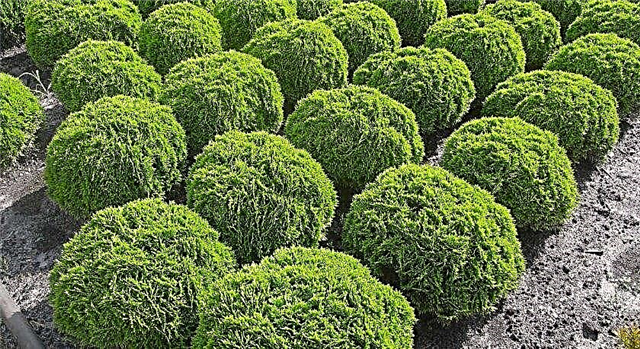
- Globosa (Globosa). Its height does not exceed 60 cm, and the crown width reaches 1 m. The advantage of this variety is that it can be a spectacular addition to any composition of shrubs, as well as be an independent decoration of the site. The minus of the tree is increased demands on the nutritional composition of the soil, and the crown loses its attractive shape with age.

- Khoseri (Hoseri). The tree is ideal for growing in small areas and flower beds, etc. the diameter of its round crown is only 40 cm, and the height is not more than 60 cm. The compactness of the representatives of the variety is their main advantage. The disadvantages of the tree include demanding watering and soil composition.

- Holmstrup (Holmstrup). This variety is tall. An adult tree can grow up to 2-3 m, and its magnificent crown looks good in compositions with other ornamental plants. The advantage of thuja Holmstrup is that it retains its conical shape even in the absence of pruning. The minus of the variety is susceptibility to drafts and exactingness to the nutritional composition of the earth.

- Smaragd. Thuja of this grade differs in especially large sizes - up to 5 m in height and 1.5–2 m in diameter. The tree can be grown on any soil, and its needles have a particularly bright emerald color. Advantages of Smaragd - high frost resistance, durability and preservation of an attractive crown shape throughout the entire period of the tree’s existence. The minus of the variety is the dependence of the color of the needles on sunlight (in the shade, the shoots of the tree become dull).
Video: Thuja Smaragd
- Brabant. The height of an adult tree is about 3.5 m, and the shape of his crown looks like a powerful column up to 3 m wide. Thuja grows rapidly and is often used to create hedges. The main plus of the variety is the preservation of the correct crown shape even without forming pruning. The disadvantage of wood is increased sensitivity to excess moisture in the soil.

- Golden Glob. The main advantage of the variety is the non-standard spherical shape of the crown and the golden color of the needles. The diameter of an adult tree is about 0.8 m, and it is usually planted in combination with flower beds and ornamental shrubs growing in containers. Among the minuses of the variety are susceptibility to waterlogging and exactingness to soil fertility.

- Aurea Nana. Representatives of this variety have a compact and dense ovoid crown formed by branches with golden needles. Thuja is up to 1.5 m high and about 70 cm wide. The plus of the tree is that with the onset of winter, each needle is painted in a saturated orange color. The disadvantages of Aurea Nana include low frost resistance and increased susceptibility to cold drafts.

- Justine (Jystynka). Tree reaches a height of 1.6 m and has a compact columnar crownformed by dense needles of saturated green color. More often this variety is used as an element of small rock gardens and flower beds. Among the advantages of Justinka are unpretentiousness to the composition of the soil and good drought tolerance. The minus of the variety is that it does not tolerate a cold climate and loses its decorative appearance when grown in a cold draft.

Regardless of the choice of variety, you need to know the rules for buying seedlings. The quality of the planting material depends on how successfully the tree takes root in the site.
- The main signs of a good seedling are:
- healthy appearance;
- absence of dry branches, injuries or traces of infection lesions;
- closed root system (container or burlap with soil);
- saturated color of needles characteristic of a particular variety;
- moderately moist earthen lump around the roots of the tree.
Did you know? The smallest variety of thuja is Little Boy. The height of an adult tree is only 40-50 cm, and the crown has an emerald color and spherical shape.
Site selection and preparation
In order for a young seedling to take root quickly in the open ground, you need to know where to plant it.
The thuja landing site must meet the following requirements:
- good light in the morning and noon in the afternoon - the sun's rays are necessary for the tree to grow a saturated color of needles, but constant exposure to the bright sun can lead to burnout of shoots;
- lack of draft - under the influence of cold air flows, thuja is more often affected by diseases, and in the wind its branches can break;
- loose and fertile soil with neutral or low acidity - provides thaw with necessary nutrients, well passes air and moisture to the roots;
- moderate amount of moisture in the soil - in wetlands or when groundwater is close to the surface of the earth, the roots of the tree will rot.

A few days before planting, you need to prepare holes for seedlings with a depth of 0.8 m and a diameter of about 1 m. The earth obtained by digging the planting holes is mixed with peat and sand (in a ratio of 2: 1: 1). Immediately prior to planting, nitroammophoska (70 g per well) is added to this mixture.
Step-by-step instruction
The procedure for planting a thuja on the site is quite simple, so even a beginner gardener can cope with it. But at the same time, it is recommended to adhere to a certain sequence of actions in order to ensure rapid rooting of the tree.
Important! Between neighboring thujas leave a distance of 3 to 5 m (depending on the variety). Trees should not obscure each other and have enough free space for growth.
Step-by-step landing instructions:
- At the bottom of the landing pit lay out drainage from pieces of broken brick, expanded clay or pebbles.
- Pour a slightly prepared fertile soil mixture over the drainage layer.
- Place the roots of a seedling in a hole with an earthen lump formed around them. In this case, the root neck should be at the same height with the surface of the earth.
- Sprinkle the deepening with the remaining loose and nutritious soil mixture. Slightly compact the surface of the soil around the trunk with your hands.
- Pour each seedling 10-15 liters of warm water so that the earth around the roots is well moistened.
- After all the moisture is absorbed into the soil, mulch the surface of the soil around the seedling with compost, peat or pieces of dry pine bark.

After landing care
Thuja belongs to unpretentious trees, therefore it does not require specific care. But in order for the planted specimen to grow and develop, while maintaining an attractive appearance and a fluffy crown, you need to pay attention to the correct watering regime, regularly feed this thirst with fertilizers, form a tree with pruning and protect it from the cold. More on how to care for a tree after planting - next.
Watering and feeding
Most varieties of arborvitae react negatively to a lack of water in the soil, but waterlogging of the soil can be dangerous for the roots of the tree. Therefore, you need to irrigate it sparingly, and also every year to apply the necessary fertilizers to the soil.
Important! If the gardener applied fertilizer during the planting of the arborvitae, then the next time fertilizing should be done only after 2 years.
Rules of watering and feeding thuja:
- the tree is irrigated once a week, and in dry and hot weather - every 3-4 days;
- 10–50 liters of water are consumed per instance (depending on the size of the tree);
- watering is carried out in the early morning or evening - while the water does not evaporate in the sun and is completely absorbed into the ground;
- so that the needles of thuja have a beautiful and fresh appearance, it is recommended to irrigate the crown every 3-4 days;
- the first top dressing is applied immediately after planting a seedling - it is watered with a solution of "Epina" or another root growth stimulator, clearly following the instructions on the package;
- in order to preserve the decorative appearance of the tree and increase its resistance to frost, diseases and pests, each year in early April, thuja is fed with a special complex of mineral fertilizers for conifers (for example, Kemira-universal), consuming about 50 g of substance per 1 m².

Cultivation of the earth
In order for the thuja to have a beautiful and lush crown, and also not be attacked by infections and pests, it is necessary to periodically loosen the soil surface, as well as remove weeds around the tree. Loosening is carried out to a depth of 5-8 cm after each watering.
This procedure is carried out with extreme caution so as not to damage the surface root system of the thuja. A layer of compost or dry sawdust is spread around the tree trunk - the mulch helps prevent the active growth of weeds, and also keeps the soil loose and moist for a long time.

Pruning
Thujas are grown in areas mainly for decorative purposes, and you can give the crown the desired shape using pruning.
Did you know? Thuja wood has a beautiful small-layer structure and is quite soft, so it is often used for the manufacture of wooden products and furniture with decorative carvings.
The tree tolerates a haircut well, but you need to perform this procedure according to certain rules:
- the first pruning of the crown is performed 2-3 years after planting a seedling;
- tree formation can be carried out in the spring before buds open, in the summer and in early September, so that the cuts can be tightened before the cold weather;
- without fail remove dry and damaged branches, as well as shoots, leading to excessive thickening of the crown;
- healthy shoots can be cut off at your own discretion, giving the crown the desired shape, but you can shorten the branch no more than ⅓ of its length;
- pruning is carried out using a sharp knife or secateurs - such a tool makes the most even cuts and does not injure the wood.

Wintering
Preparation of a thuja for wintering includes such actions:
- at the end of September, it is necessary to carry out water-loading irrigation of the tree, moistening the soil around it well;
- the surface of the earth around the trunk is covered with a thick layer of peat or compost - this will protect the roots of the tree from freezing;
- young specimens under the age of 3 years are wrapped in burlap, fixing it with a rope to prevent frostbite of the branches;
- adult trees need to be covered only when grown in areas with very harsh winters, but the fallen snow must be shaken off from the shoots so that they do not crack.
Did you know? In ancient Greece, thuja branches were used for sacrificial fires. The name of the tree in Greek means “incense”.
Disease and Pest Prevention
Thuja can sometimes suffer from pests or fungal infections. More often this is caused by errors in tree care or the wrong choice of place for growing.
Possible problems and their symptoms are listed below:
- Fusarium. The disease affects the root system of the tree. Branches begin to turn yellow and dry in the infected specimen, and the needles take on a reddish hue. At the advanced stage, it is impossible to cure the disease, therefore, the thuja is destroyed.

- Cytosporosis. The infection rapidly affects all shoots of the arborvitae, as a result of which their tips begin to dry out. The main signs of the disease are deep cracks in the cortex, from which a whitish resin oozes, as well as a reddish shade of needles. At the advanced stage, thuja branches are exposed, and the tree dies.

- Brown shute. The disease usually begins with the lower shoots of the tree, which during the winter were at the same level with the snow cover. The surface of the needles is covered with a dark brown fungal coating, on the surface of which black spherical tubercles form over time. Mycelium destroys the shoots, leading to their drying out.

- False shield. The body of the pest is painted in a dark yellow color, and its length does not exceed 3 mm. The insect lays eggs under the bark, from which larvae appear. Pests suck the juice from the shoots, needles and cones of the thuja, causing the tree to dry out. The main sign of infection is large yellow ulcers that form on the surface of the cortex.

- Thuja aphid. Insects live on young shoots and feed on their juice. The body of the pest is small and grayish brown. The needles on the branches damaged by aphids turn yellow, and then crumbles.

- Tuevaya hooter. This pest harms the bark of the tree, leaving round holes on it. It feeds on wood, living inside the trunk and shoots, so it is not easy to notice. As a result of the life of the beetle, the thuja turns yellow and dries.

- Spider mite. The insect multiplies rapidly and sucks the juice from shoots and needles. As a result of this, the thuja turns yellow and gradually dries. The main sign of the appearance of a pest on a tree is a thin white web that entangles branches.

For the treatment of fungal infections, special preparations are used (for example, “Kartotsid”, “Khom”) or Bordeaux liquid, spraying thawed with an interval of 10-14 days.
You can cope with pests with the help of Decis, Actellik preparations, treating them with a tree 2 times a month until the insects completely disappear. In order to destroy the thughoid beetle, injections are used with these agents, which are done at the sites of trunk damage.
Important! All areas of the tree damaged by diseases and pests must be removed and destroyed. They can serve as a source of further spread of the infection.
- To prevent these problems from occurring, it is recommended:
- use only healthy seedlings purchased in a specialized store or nursery for planting;
- choose well-lit areas away from drafts for thuja cultivation;
- observe watering regimen;
- properly fertilize;
- weeding the earth around the trunk;
- destroy plant debris and loosen the soil near the tree;
- annually carry out sanitary and thinning crown pruning.
Video: Thuja Care
Any gardener will be able to independently grow at his dacha and use it for landscaping, if he follows the tips and rules listed above. And thanks to the variety of varieties, you can choose a tree with a crown shape that best complements the other decorative elements of the site.

















